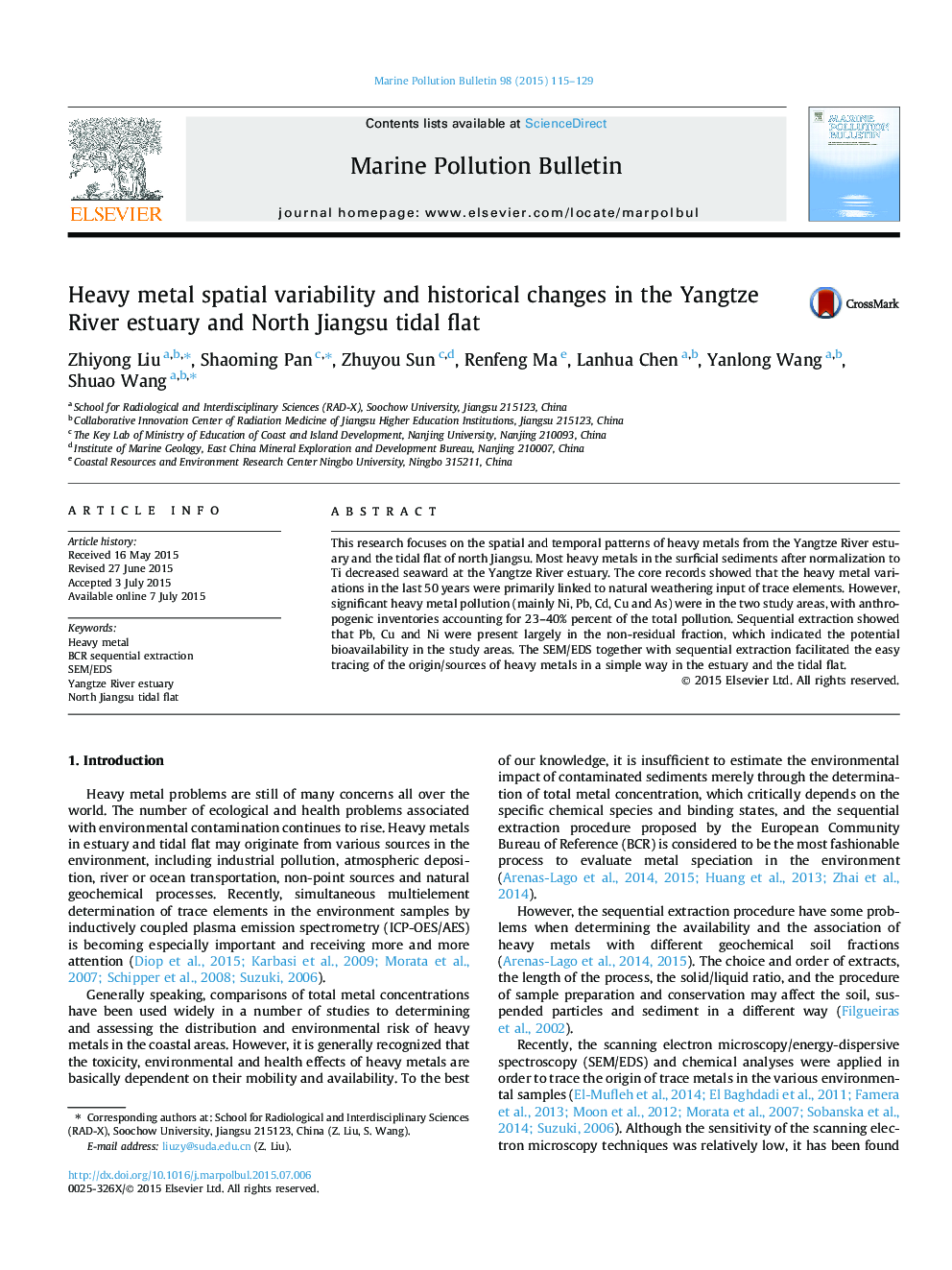| Article ID | Journal | Published Year | Pages | File Type |
|---|---|---|---|---|
| 4476702 | Marine Pollution Bulletin | 2015 | 15 Pages |
•Heavy metals were analyzed from Yangtze River estuary and North Jiangsu tidal flat.•Natural and anthropogenic sources of heavy metals were evaluated.•Significant Ni, Pb, Cd, Cu and As pollution were observed in the two study areas.•Convenient measurement of the biological availability and toxicity of heavy metals.
This research focuses on the spatial and temporal patterns of heavy metals from the Yangtze River estuary and the tidal flat of north Jiangsu. Most heavy metals in the surficial sediments after normalization to Ti decreased seaward at the Yangtze River estuary. The core records showed that the heavy metal variations in the last 50 years were primarily linked to natural weathering input of trace elements. However, significant heavy metal pollution (mainly Ni, Pb, Cd, Cu and As) were in the two study areas, with anthropogenic inventories accounting for 23–40% percent of the total pollution. Sequential extraction showed that Pb, Cu and Ni were present largely in the non-residual fraction, which indicated the potential bioavailability in the study areas. The SEM/EDS together with sequential extraction facilitated the easy tracing of the origin/sources of heavy metals in a simple way in the estuary and the tidal flat.
